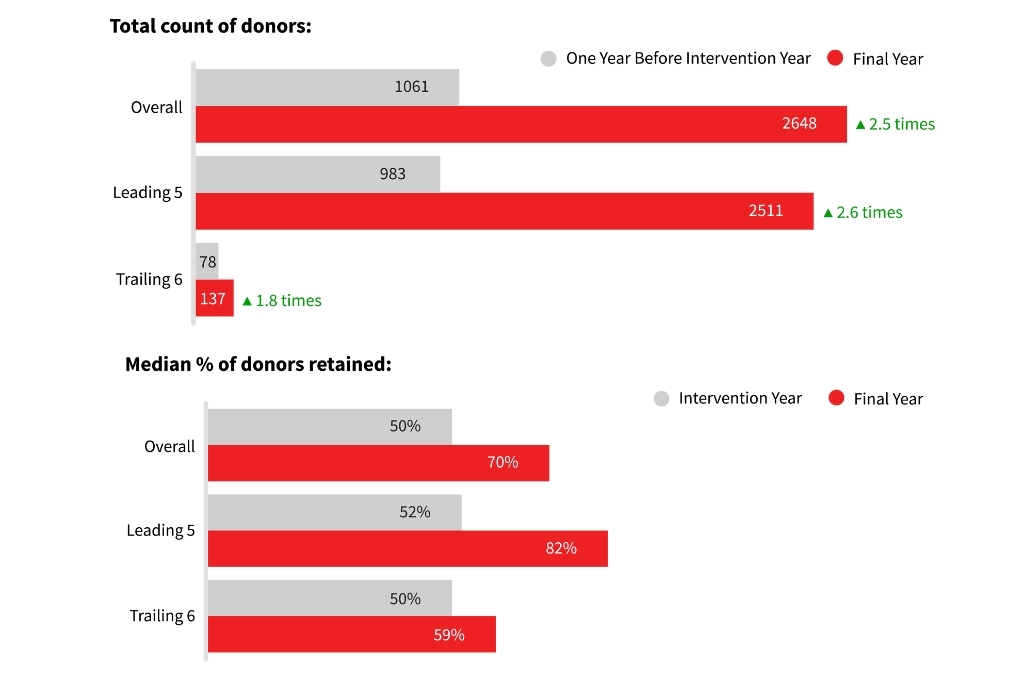At ATE Chandra Foundation, we have been closely studying and investing in capacity building in the social sector. In recent years, our work has shown us that nonprofits are constantly grappling with fluctuating budgets, whether due to FCRA-related uncertainties, the priorities of a foundation, or CSR budgets being tied to corporate performance. Donors are also starting to demand rigorous due diligence and more measurable outcomes, besides looking into long-term theory of change and sustainability.
In this context, we believe that nonprofit leadership and boards can no longer afford to be passive recipients of grants. They must become far more strategic in their actions, equipping themselves with the capabilities to scout, onboard, and retain donors while also fostering long-term engagement. Fundraising must now transform into a team function, supported by the board, led by dedicated professionals, and powered by robust internal systems.
Scarcity and its costs
Our efforts towards capacity building and observing the sector over the past decade have revealed a persistent pattern: organisations often acknowledge the need for fundraising support but rarely prioritise it. Even boards and CEOs are often reluctant to allocate resources to anything deemed ‘non-programmatic’. Funders overwhelmingly encourage channelling as much of every rupee into programme delivery as possible, overlooking a simple truth—a train doesn’t go far without a well-oiled engine.
This is what we now recognise as a scarcity mindset, where the fear of resource limitations perpetuates underinvestment in the very systems that could unlock growth. To challenge this mindset, we began experimenting with a different approach more than 10 years ago: instead of programmatic funding, we provided grants specifically for building core capabilities such as fundraising, communications, HR, and monitoring and evaluation (M&E).
In 2024, we conducted an impact study on 11 of our nonprofit partners whom we had supported with multi-year grants over the span of a decade. This helped us understand the long-term effects of investments in fundraising.
What the data tells us
At the start of our engagement, the cohort was made up of not start-ups but mature and credible organisations—17 years old on average—working across service delivery, advocacy, and research. These nonprofits had a median annual budget of INR 4.2 crore, and our support at an annual median grant of INR 9 lakh was modest in that context. However, this was a significant amount when considered as a percentage of their total overhead cost. The grant was focused on fundraising and typically lasted between four and eight years.
On comparing baseline data from FY 2013 to data from FY 2024, here’s what we found:
- The nonprofits saw a median growth of 23 percent in their annual budget.

- Their donor base grew by 2.5x, with retention rates improving from 50 percent to 70 percent. The average grant size increased by 66 percent.

- The nonprofits recovered the costs associated with hiring fundraising staff in just one to four months, with tech-enabled fundraising yielding faster returns.
What works: Lessons from the field
Beyond the metrics, we unearthed valuable insights about what enables successful fundraising transformation. Capacity building, we found, is rarely linear; it demands experimentation, occasional failure, and constant adaptation. Certain best practices have consistently helped in moving the needle:
1. Strategic fundraising plans
Nonprofits that embedded fundraising into their core operations—by defining target donor profiles, grant sizes, and retention strategies—shifted from reactive efforts to a proactive engine for growth. It helped organisations to have clearly defined objectives for fundraising, align the leadership team on their role, and leverage their network of supporters and well-wishers more effectively.
2. Dedicated fundraising professionals
When a nonprofit’s budget crosses INR 1 crore, which is usually when they have established proof of concept and have at least one tested flagship programme with the potential to scale, it’s time to bring in more professionals. These individuals don’t replace the founder—they amplify their efforts. In the initial years, this leads to an increase in fundraising costs, pushing them to as high as 4–5 percent of the total budget. However, as operations scale and nonprofits become more efficient, this typically drops to approximately 2–3 percent.
3. Leveraging technology
Donor CRMs and automation tools have transformed how nonprofits engage stakeholders. One organisation in the study was able to use a CRM platform to streamline scholarships, alumni engagement, and training. With better data and personalised outreach, many of their alumni became active donors. Their contributions grew from INR 21 lakh in FY 2011 from 195 alumni to INR 4.2 crore in FY 2022 from more than 1,500 alumni, showcasing the power of tech-enabled engagement.
4. Effective communication
Fundraising is about both asking and storytelling. High-performing nonprofits kept donors informed, engaged, and connected to the cause. They built relationships not only with primary contacts but also across levels within donor organisations, strengthening trust and transparency.
5. Continuous review and adaptation
No fundraising strategy remains effective forever. Nonprofits that regularly revisit their plans and align resources with evolving goals are far more likely to sustain momentum. One organisation in our study experienced this firsthand when it faced the risk of shutting down during COVID-19 after a major donor withdrew support. In response, they diversified their donor base while also prioritising retail fundraising. With a targeted approach, they increased their individual donor base from just 10 in FY 2019 to more than 500 in FY 2021—a 50-fold increase.
This example reflects a broader trend. A decade ago, many nonprofits dismissed CSR as irrelevant, while others depended on a few reputed foreign donors. Before the COVID-19 pandemic, the idea of building even a small corpus was often overlooked. Today, the need to invest in retail fundraising still goes largely unacknowledged. Yet, the sector continues to prove that the fundraising landscape is constantly changing. Those who fail to adapt risk being left behind.

Challenges that hindered growth
While the aforementioned strategies worked, the journey isn’t always smooth sailing. The study found that a variety of challenges inhibit nonprofits from maximising their fundraising efforts. These include:
1. Limited advocacy for corpus funding
Donors often perceive corpus contributions as administrative or lacking in impact, making them hesitant to support long-term financial resilience. They instead prioritise programmatic funding with visible, short-term outcomes. Simultaneously, nonprofits rarely make a compelling case for corpus funding. When focused on immediate programme needs, they fail to communicate how a corpus enables operational continuity and sustainability. This limits nonprofits’ ability to raise any significant corpus funds.
2. The struggle to engage senior fundraisers
Several nonprofits in the cohort struggled with deciding whether to hire senior fundraising professionals. For organisations implementing complex interventions or needing to build deep relationships with donors, hiring a senior professional alone did not sufficiently meet their core requirements. These organisations often needed structured, process-oriented support—such as conducting in-depth donor research, maintaining donor pipelines, and handling regular reporting—which could often be more efficiently managed by junior personnel. In such scenarios, founders or senior leaders still had to dedicate considerable time to fundraising efforts, as their direct involvement remained critical for securing funds.
3. Underinvestment in retail fundraising
Most nonprofits deprioritised retail fundraising, with only one organisation in the study actively investing in and implementing a retail fundraising strategy. The majority focused their efforts on institution building, often neglecting retail giving because of the high perceived cost of establishing and maintaining such initiatives and their limited capacity to do so. However, retail donations offer flexible, untied funding and help build a broader support base. It is therefore important for nonprofits to consider this largely untapped opportunity and explore creative approaches to engage everyday donors in contributing to social impact.
Fundraising as a shared responsibility
The future of fundraising should not be the responsibility of nonprofits alone. Donors must also rethink how they support the sector. It’s time for us to stop asking nonprofits to constantly prove their worth while denying them the means to do so. If we want stronger, more resilient organisations, we must support them in building the foundations that allow them to thrive.
We urge nonprofits to build their roadmaps, hire more people in fundraising and other aspects of organisational capacity, and invest in their own resilience. Similarly, we encourage our fellow funders to ask not just what their funding delivers, but what it unlocks.
When it comes to organisational capacity, it is time for us to shift from scarcity to abundance.
Disclaimer: IDR is funded by ATE Chandra Foundation
—





